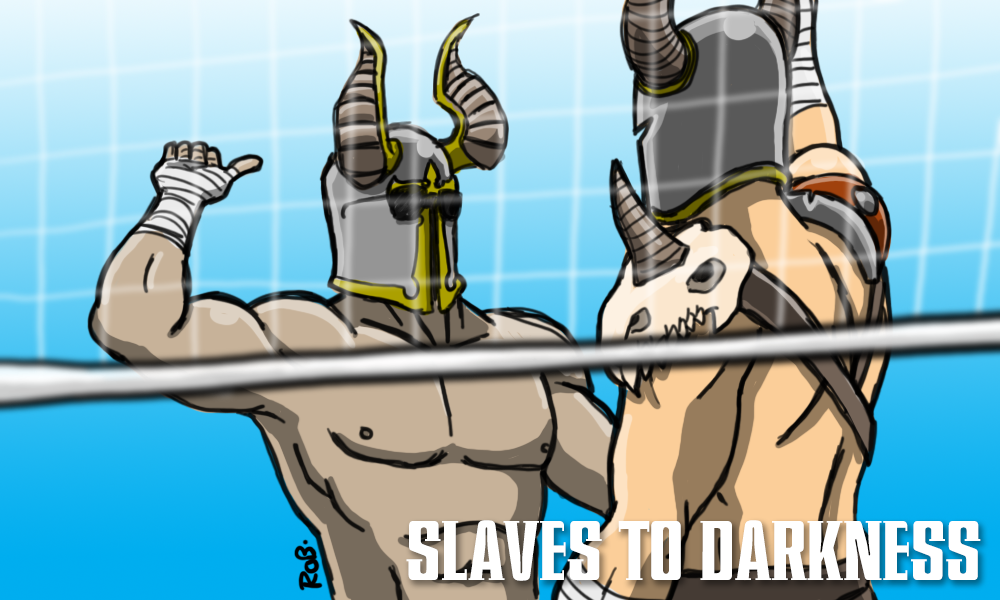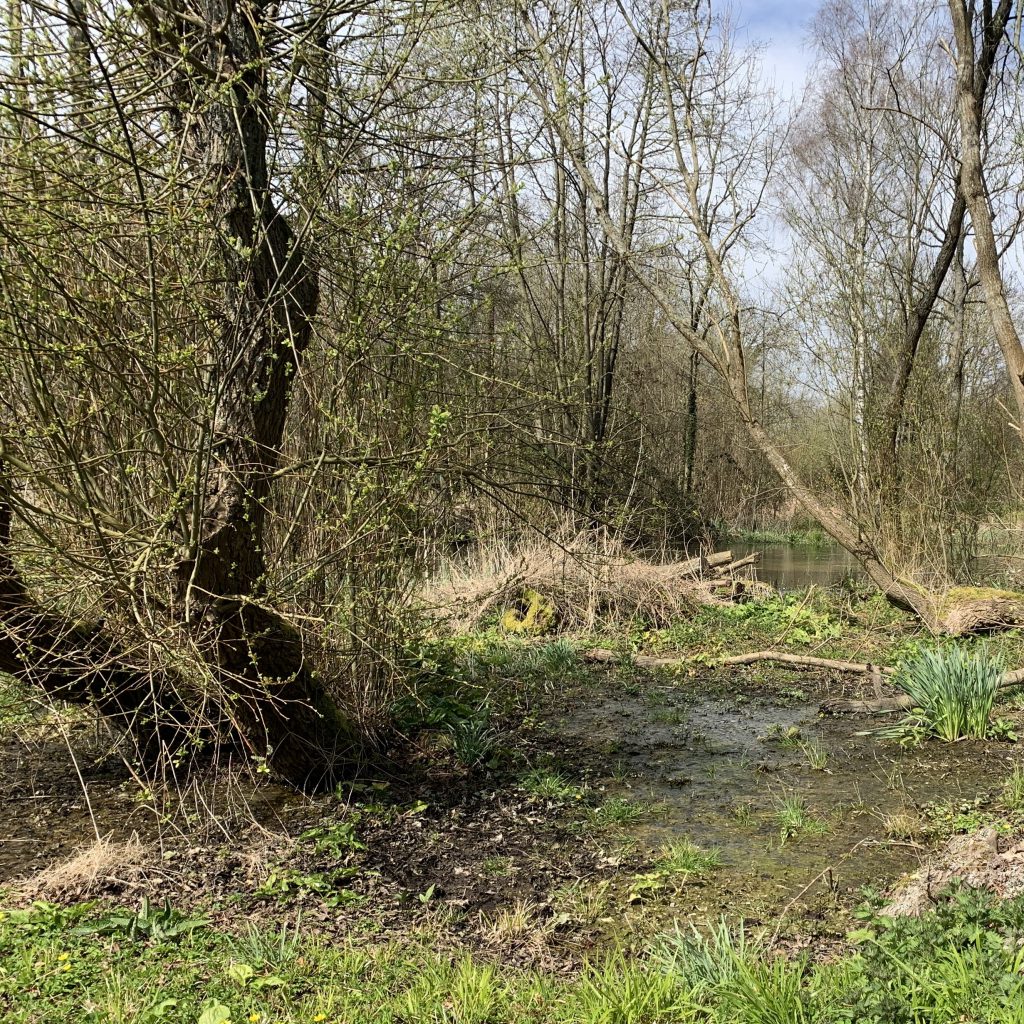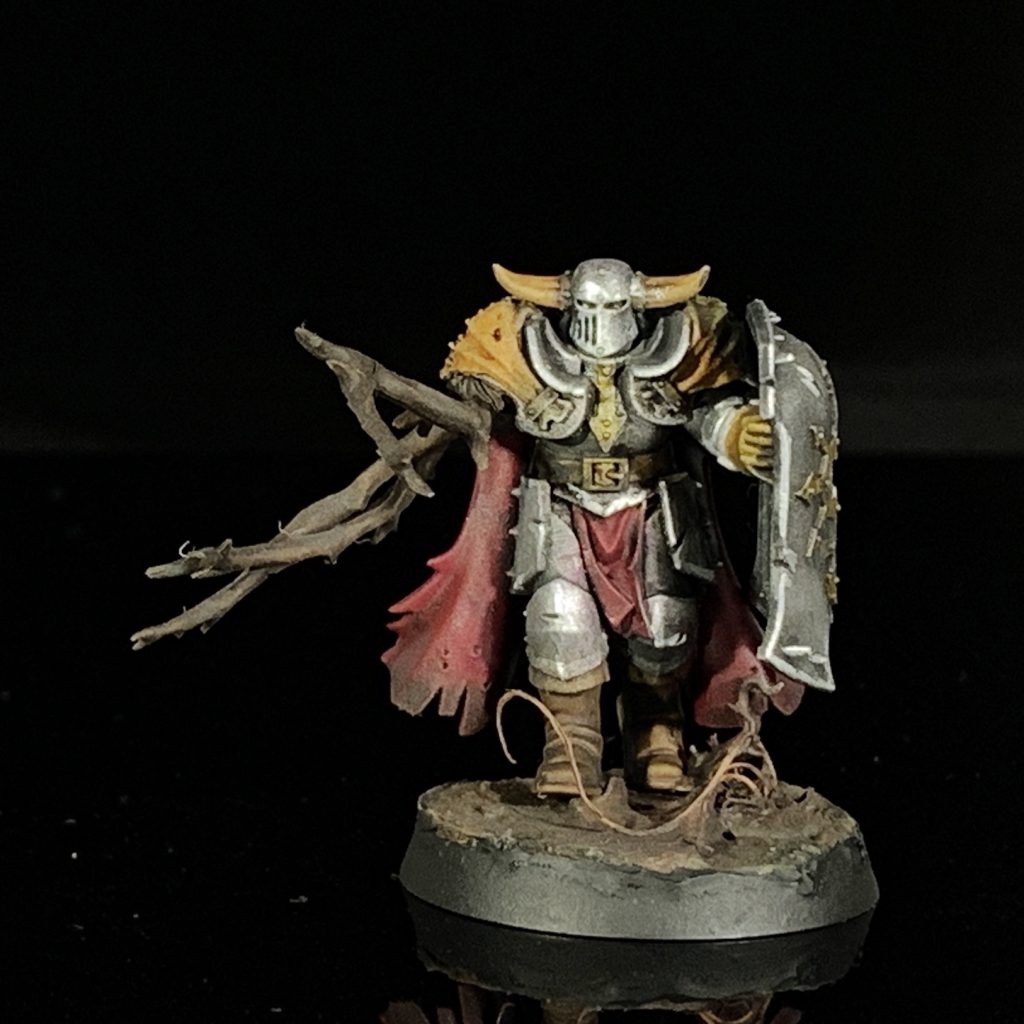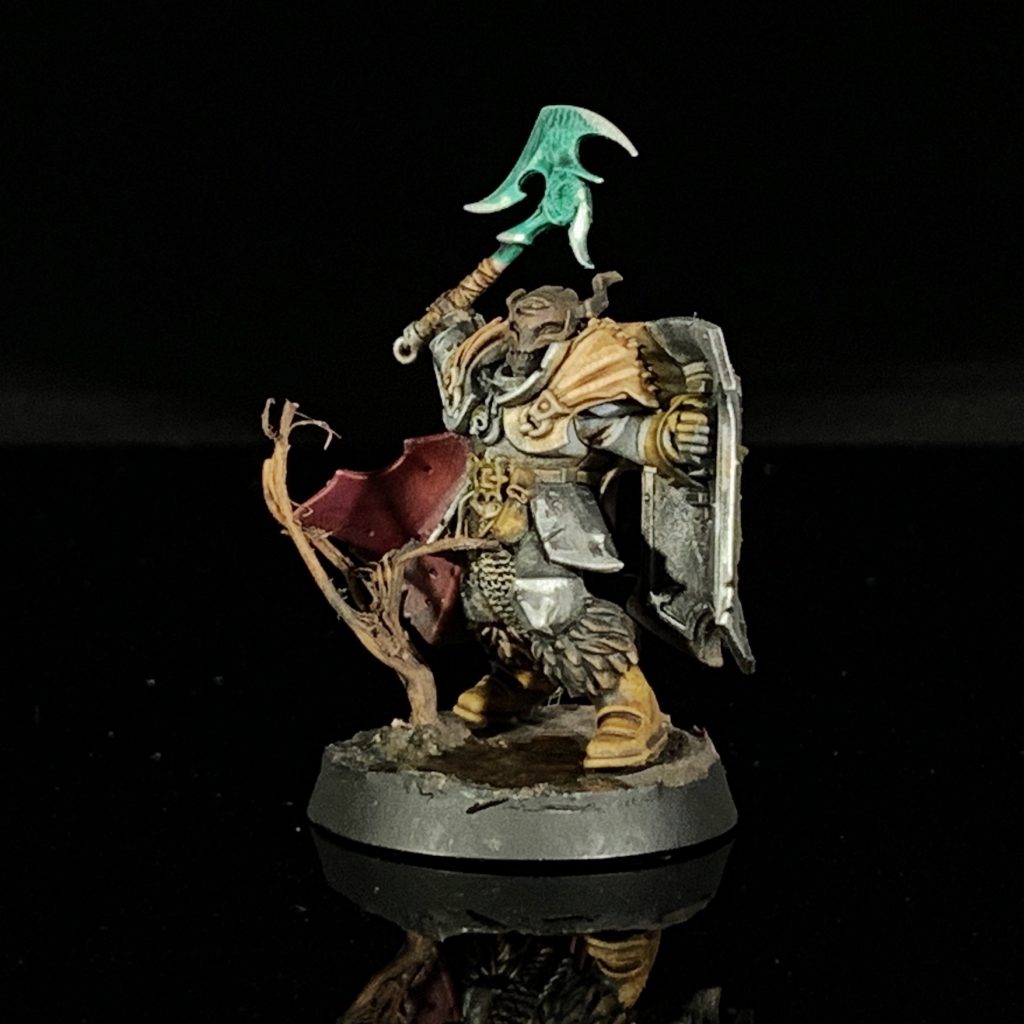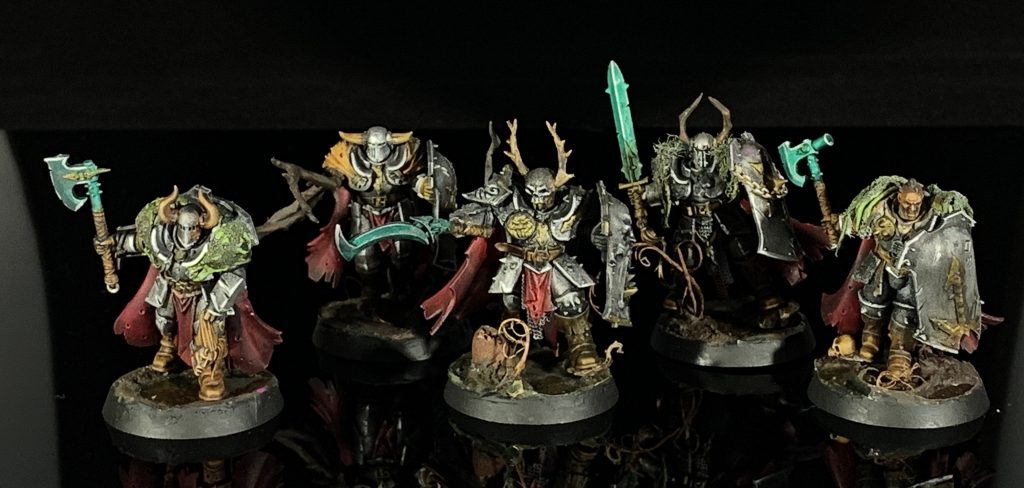The Dark Age of Sigmar
The Dark Age of Sigmar, also known as AoS28 and Warhammer Hinterlands, is a visual aesthetic and playstyle inspired by the artist John Blanche. Cool conversions and interesting stories are the focus for this style of hobbying, and you’ll often find converted warbands accompanied by interesting backgrounds and origins. The refreshed setting of Age of Sigmar lends itself well to this style of modelling, with enormous flexibility being built in to the setting with the Realms.
Coming up with a theme and story
When I received a Start Collecting Slaves to Darkness as a gift, I knew I wanted to do something special with it and had been playing around with a few different conversion ideas across Warhammer 40K and Necromunda. With the constraint that I didn’t want to buy too many kits just to use for conversion pieces, and most of my Sylvaneth army built and pieced out in to my bitz box, I had a jumping off point.
The first thing to figure out was my colour palette. I’m sucker for the classic scheme of black with gold trim and wanted my scheme to be informed by this at least a little bit.
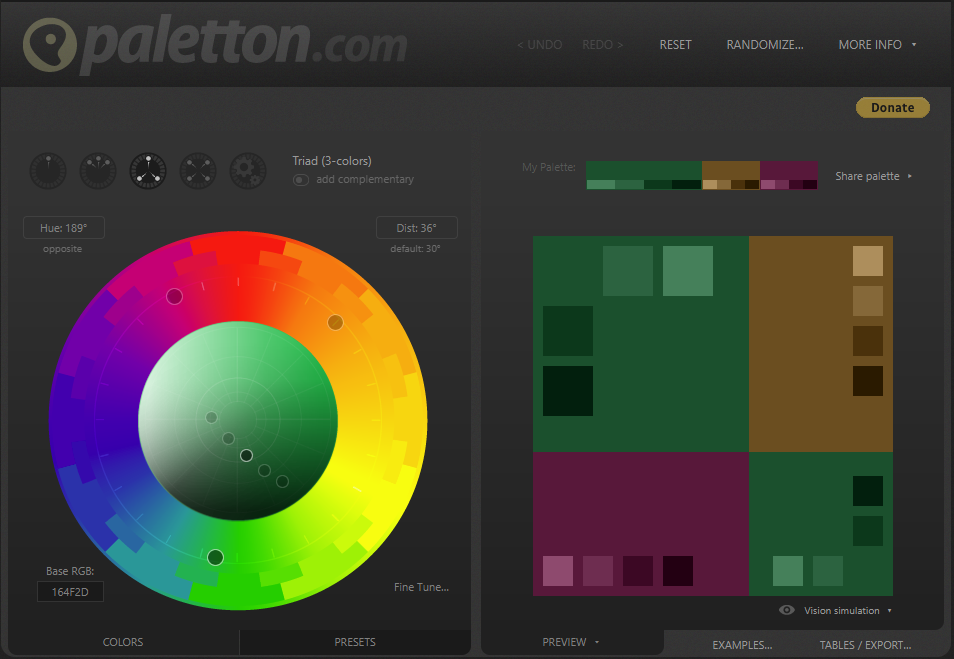
Paletton is great for playing around with scheme and seeing how colours look next to each other and I try and use it whenever I’m playing around with custom schemes. The armour itself would be silver, washed down to black with an oil filter and then worked back up in places. I planned on bringing some colour and definition to the rest of each piece with deep magenta cloaks, tarnished golds and earthy greens and browns to represent decay without going too far towards a completely Nurgle theme.
At this point an idea was starting to form for how I actually wanted them to look, and with that came a back story.
Sent by Archaon to retrieve the Thorn of Leshy from Ghyran, they were successful in their mission but doomed from the beginning. Upon seizing the Thorn, they became trapped in an enchanted glade, with each death they’re brought back with more of the swamp in them. To leave the glade, they would need to cast the Thorn aside and return empty handed to Archaon, which would mean certain death. So they remain, slowly being overtaken by the magics coursing through the cursed swamp.
With a story in mind, I ventured outside to get some inspiration for where they might be stuck. I’m lucky enough to live near a river with marshland, so there was plenty of scenery to pull ideas from.
The conversion process
With a backstory, colour palette and an overflowing bits box it was time to actually think about how I wanted them to look. Using the highly sophisticated technique of Paint, I colours in one of the models I’d built up and sketched places I’d potentially convert.

First up was dealing with all of the fur, while it’s cool it didn’t really fit with the vision and background I had. After assembling everything I spent some time using my snippers and scalpel to shave off all of the various areas with fur. I then used a mix of hand rolled green stuff vines and fine basing flock to build up a more organic texture. To add some variation, on some models I also used a combination of PVA and super glue. Spreading PVA straight on to the area I wanted to cover, and then dripping super glue on to it causes a reaction in the PVA that ends up making it look like shrivelled and rotting flesh once it’s dried. It’s relatively fragile so hardening it with a layer of liquid superglue once it’s dried isn’t a bad idea.
With the warband being stuck in a swamp, blunt weapons become less useful for hacking their way through vines and this is when I started raiding the Sylvaneth bitz box. Chopping the mace heads from all the models wielding blunt weapons and replacing them with the various sharp implements usually wielded by Tree-Revenants. Where possible, I usually pinned these in place first just to add some extra rigidity to the join location, with a little green stuff to smooth any obvious gaps.

I also wanted to represent the swamp slowly claiming the warriors the more often they fell, so I entirely removed an arm to replace it with a mixture of Dryad branches. Carrying this theme through, I replaced a number of horns on helmets and a head swap from the Kurnoth Hunter kit.
Painting techniques
Most of the techniques used here were pretty standard. I started with a grey prime, followed by painting pretty much the entire model VMA Duraluminum. This gave me a good base of the armour, and once it was on I went back and hit all of the non metallic areas with white ink via an airbrush. After a quick tidy up using a brush of the metallic areas which had been over sprayed white I began blocking in the basic colours.
I used Flesh Tearers Contrast for the cloks and cloth, Snakebite Leather Contrast for the leather and Wyldwood Contrast for any wooden pieces which were already in place. Golds were blocked in using Scale75 Necro Gold and various other details were picked out with what I felt was most appropriate.
With all of the basic blocking done, I moved on to adding some grime using technical paints such as Vallejo Streaking Grime, Typhus Corrosion, Agrax Earthshade and Athonian Camoshade. Working this is in to the various recesses and streaking it over the model to build a dirty and lived in look.
Once this step was complete I matte varnished the models before moving on to oils. For the armour, I used Lamp Black as the main colour with spots of Pthalo Green and Burnt Umber to add some earth tones. The weapons were given a wash of Pthalo Green and leathers were also washed with Burnt Umber. I allowed all of this to run on to the bases and wasn’t too careful at this point as it would all add texture and depth. You can either wait for the oils to dry out a little naturally or hit them with a hairdryer to speed the process up a little. I was painting in the evening and wanted to push the progress on so it was time to bust out the hair dryer and speed things up.
With the models dried out a little, I began pulling oil paint from the surface with a Q-tip and a little turpentine if it was too dry. This leaves the oil in the recesses and builds a nice transition in areas where it’s removed. The only point I was careful not to mix colours too much was the magenta wash I’d applied to the cloaks, using a fresh Q-tip for this. When I was done working with oils, I hit all of the models with another layer of matte varnish before moving on to the next phase.
I didn’t want too much of my detail muddied and lost, and it can be a downside of blending oils directly on to the model. Going back over certain areas with much punchier highlights I picked out certain areas with their original base colours, giving them hard high lights to help better define the shape of the miniature.
That covers pretty much my entire process, so here’s the end result! The Warriors of Leshy.
This was great practice for the rest of the box, which I’ll be writing about (and remembering to take work in progress photos) in the coming months! I’d love to see your Blanche inspired creations and all things AoS28/Inq28 so drop us an email at contact@goonhammer.com with some pictures.
